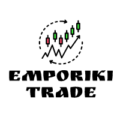Understanding The Us Commodity Market: A Comprehensive Guide
The US Commodity Market is a vibrant and dynamic space where raw or primary products are traded.
It includes everything from agricultural products like wheat and corn to precious metals such as gold and silver.
Understanding this market can be your key to unlocking numerous trading opportunities.
What Is The Us Commodity Market?
The US Commodity Market is a centralized marketplace where commodities are bought and sold.
Commodities are physical goods ranging from natural resources like oil to agricultural products like cotton.
This market operates under strict regulations to ensure transparency and fairness for all participants.
The Role Of Exchanges
Exchanges like the Chicago Mercantile Exchange (CME) and the New York Mercantile Exchange (NYMEX) facilitate these trades.
They provide a platform for buyers and sellers to engage in transactions efficiently.
By standardizing contracts, these exchanges help in reducing risks associated with commodity trading.
Types Of Commodities Traded
The US Commodity Market can be broadly classified into four categories: Metals, Energy, Agriculture, and Livestock.
Each of these categories has its own unique characteristics and trading dynamics.
Metals
Metals include precious metals like gold, silver, platinum, and industrial metals such as copper.
Gold often serves as a hedge against inflation, while industrial metals are closely tied to economic growth.
Energy
Energy commodities include crude oil, natural gas, gasoline, and heating oil.
These commodities are crucial for powering industries and homes alike.
Agriculture
Agricultural commodities cover grains (wheat, corn), softs (coffee, cotton), and others like sugar.
These are sensitive to weather conditions making them highly volatile at times.
Livestock
Livestock involves cattle, hogs, etc., Which have their own set of market drivers including feed costs and disease outbreaks.
Trading Strategies In The Us Commodity Market
When it comes to trading in the US Commodity Market, having a robust strategy is essential. Here’s an overview of some popular strategies:
Trend Following
Trend following involves identifying the direction of the market trend—whether it’s up or down—and making trades that align with that trend.
For instance, if gold prices are consistently rising due to geopolitical tensions, a trend-following strategy would involve buying gold futures contracts.
Candlestick Patterns And Technical Analysis
Technical analysis uses historical data to forecast future price movements. One popular method is using candlestick patterns which provide visual cues about market sentiment. For example, a bullish engulfing pattern may indicate an upward price movement in crude oil futures.
Fundamental Analysis
Fundamental analysis involves examining economic indicators that affect commodity prices such as supply-demand dynamics or geopolitical events. For instance, drought conditions could impact wheat supply leading traders to predict higher prices.
The Impact Of Speculation In The Us Commodity Market
Speculation plays a significant role in the US Commodity Market by adding liquidity but also introducing volatility.
Traders often speculate on future price movements without intending to take physical delivery of the commodity.
This speculation can lead both positive—by increasing market efficiency—and negative outcomes—by creating excessive volatility.
For example:
When speculative traders enter the crude oil market anticipating higher future prices due geopolitical tensions
They may push prices up even before actual supply disruptions occur.
This could lead real-world impacts including higher gasoline prices at pump affecting consumers everywhere!
Risk Management In The Us Commodity Market
Risk management is crucial when navigating through complexities inherent within this marketplace!
Traders employ various techniques mitigate risks associated their positions including hedging diversification stop-loss orders etc.
Hedging
Hedging involves taking offsetting position reduce potential losses
Diversification
Diversification spreads risk across multiple assets reducing impact any single adverse event
Stop-Loss Orders
Stop-loss orders automatically close out trade once certain loss threshold reached preventing further losses
The Future Of The Us Commodity Market
As technology advances new trends emerge shaping future landscape
Automation algorithms artificial intelligence transforming way trade executed providing greater speed efficiency!
Blockchain technology promises enhance transparency traceability within supply chains potentially revolutionizing entire industry!
In conclusion understanding intricacies involved within can provide edge needed succeed! Armed knowledge robust strategies effective risk management tools you’re well-equipped navigate thrive amidst ever-changing dynamics This fascinating world offers endless opportunities those willing learn adapt innovate!
Whether you’re novice seasoned trader there’s always something new discover explore So dive embark journey today who knows might just uncover next big opportunity awaits you around corner
Stay tuned more insightful articles tips tricks help master art science Happy Trading

